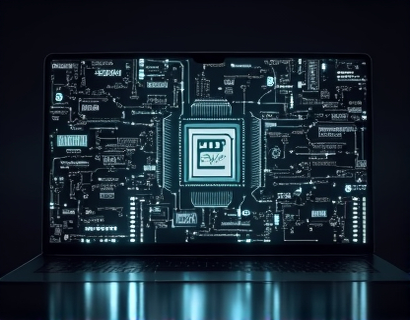Streamlining Government Leadership: Advanced Software for Enhanced Efficiency and Collaboration
In the realm of governance, the need for efficient and effective administration has never been more critical. As governments and organizations strive to meet the growing demands of their constituents, the integration of advanced software solutions has emerged as a pivotal strategy to streamline processes, enhance decision-making, and foster collaboration. This article delves into the transformative impact of innovative tools designed to simplify complex administrative tasks, empowering leaders to achieve operational excellence and modernize their practices. For those committed to enhancing efficiency and effectiveness in governance and resource management, the adoption of such technologies is not just beneficial but essential.
The landscape of government and organizational administration is rapidly evolving, driven by technological advancements and the increasing complexity of public services. Traditional methods of managing resources and operations are often cumbersome, prone to errors, and inefficient. Advanced software solutions offer a robust alternative, providing a comprehensive platform that can handle a wide range of administrative tasks with precision and speed. These tools are designed to not only automate routine processes but also to facilitate better communication and collaboration among team members, leading to more informed and strategic decision-making.
Simplifying Complex Administrative Tasks
One of the primary challenges faced by government leaders and administrators is the management of complex and diverse tasks. From budgeting and procurement to human resources and public services, the scope of responsibilities is vast and often interconnected. Advanced software solutions address this by offering integrated platforms that centralize data and streamline workflows. For instance, a comprehensive government management system can automate budget planning and execution, ensuring that financial resources are allocated efficiently and transparently. This not only reduces the risk of errors but also saves significant time and effort, allowing staff to focus on more strategic initiatives.
Another critical area where software can simplify tasks is in the management of public records and documentation. Digital document management systems enable the secure storage, retrieval, and sharing of documents, reducing the need for physical storage and minimizing the risk of loss or damage. These systems often include advanced search capabilities, making it easier for officials to find the information they need quickly. Additionally, version control features ensure that the most up-to-date documents are always accessible, reducing confusion and improving accuracy.
Enhancing Decision-Making
Effective governance relies heavily on informed decision-making. Advanced software solutions play a crucial role in this by providing leaders with real-time data and analytics. By leveraging big data and artificial intelligence, these tools can process vast amounts of information to generate insights that were previously unattainable. For example, predictive analytics can help forecast trends and outcomes, enabling proactive rather than reactive governance. This data-driven approach ensures that decisions are based on solid evidence, reducing the likelihood of mistakes and improving overall effectiveness.
Moreover, collaborative decision-making platforms allow multiple stakeholders to contribute their expertise and perspectives in real-time. This democratization of decision-making not only enhances the quality of outcomes but also builds trust and transparency within the organization. Leaders can engage with department heads, community representatives, and other key players to gather input and reach consensus more efficiently. Such platforms often include features like discussion forums, voting mechanisms, and task assignments, ensuring that the decision-making process is both inclusive and structured.
Fostering Collaboration
Collaboration is a cornerstone of modern governance, and advanced software solutions are designed to facilitate seamless communication and teamwork. In a typical government or organizational setting, various departments and teams often work in silos, leading to fragmented efforts and duplicated work. Integrated collaboration tools break down these barriers by providing a unified platform where all stakeholders can interact and coordinate their activities.
Project management software is a prime example of how collaboration can be enhanced. These tools allow teams to plan, execute, and monitor projects with ease. Features such as task assignment, progress tracking, and file sharing ensure that everyone is on the same page and that projects stay on track. Additionally, real-time notifications and updates keep all team members informed, reducing the need for constant meetings and emails. This not only saves time but also fosters a more cohesive and productive work environment.
Communication platforms are another essential component of collaborative governance. Video conferencing, instant messaging, and collaborative document editing tools enable officials to connect and work together regardless of their physical location. This is particularly valuable in today's increasingly remote and distributed workforce, where face-to-face interactions are not always possible. By providing these tools, governments can ensure that collaboration is not hindered by geographical constraints, leading to more inclusive and effective governance.
Improving Resource Management
Efficient resource management is vital for the sustainability and success of any government or organization. Advanced software solutions offer powerful tools to optimize the allocation and utilization of resources, from human capital to financial and material assets. By gaining a clear and comprehensive view of available resources, leaders can make more informed decisions about allocation and prioritization.
Workforce management software, for instance, helps in optimizing staff schedules, tracking attendance, and managing leave requests. This not only ensures that the right people are in the right roles at the right times but also helps in identifying and addressing potential shortages or overstaffing issues. Similarly, asset management systems can track the usage and maintenance of physical assets, such as vehicles, equipment, and buildings, ensuring that they are used efficiently and maintained properly. This reduces costs and extends the lifespan of assets, providing long-term savings.
Budgeting and financial management tools are equally important in resource optimization. These systems provide detailed insights into financial flows, helping leaders to identify areas where costs can be reduced or reallocated. Automated reporting and forecasting features enable timely and accurate financial planning, ensuring that resources are used effectively to meet the organization's goals. By streamlining financial processes, these tools reduce the risk of errors and fraud, enhancing overall financial health.
Modernizing Practices and Achieving Operational Excellence
The adoption of advanced software solutions is not just about addressing current challenges but also about preparing for the future. As technology continues to evolve, governments and organizations must stay ahead of the curve to remain competitive and effective. By embracing innovative tools, leaders can modernize their practices, leading to operational excellence and sustained success.
One key aspect of modernization is the implementation of cloud-based solutions. Cloud computing offers scalability, flexibility, and cost-effectiveness, allowing organizations to access powerful tools and services without the need for extensive infrastructure investments. This enables smaller or resource-constrained entities to leverage advanced technologies that were once only available to larger organizations. Additionally, cloud-based solutions ensure that data is securely stored and easily accessible from anywhere, enhancing both productivity and collaboration.
Another important consideration is the integration of artificial intelligence and machine learning into administrative processes. AI can automate routine tasks, such as data entry and report generation, freeing up staff to focus on higher-value activities. Machine learning algorithms can analyze patterns and trends in data, providing predictive insights that inform strategic decisions. For example, AI-powered chatbots can handle routine inquiries from the public, reducing the workload on customer service teams and improving response times.
Furthermore, the use of Internet of Things (IoT) devices can revolutionize how governments manage infrastructure and public services. Smart city initiatives, for instance, utilize IoT sensors to monitor and manage traffic, energy usage, and environmental conditions in real-time. This data can be used to optimize resource allocation, improve public safety, and enhance the overall quality of life for citizens. By integrating IoT into their operations, governments can create more efficient, responsive, and sustainable urban environments.
Conclusion
The integration of advanced software solutions in government and organizational leadership is not just a trend but a necessity in today's complex and dynamic environment. These tools offer a multitude of benefits, from streamlining administrative tasks and enhancing decision-making to fostering collaboration and improving resource management. By embracing these innovations, leaders can achieve operational excellence, modernize their practices, and better serve their constituents. As technology continues to advance, the potential for further improvements in governance and administration is vast, making it an exciting and promising field for those committed to excellence and efficiency.










































